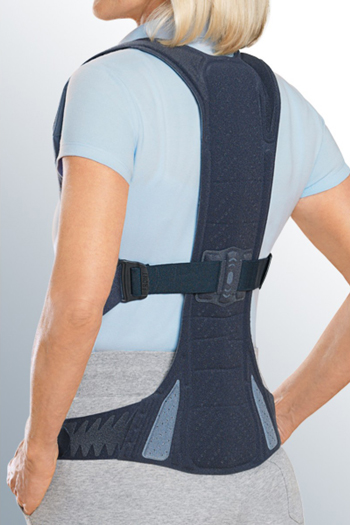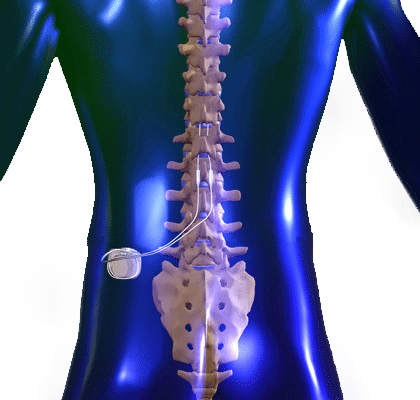Treating chronic pain, either as regularly occurring acute episodes or persistent pain, can be very difficult with mixed outcomes, debilitating patients and leaving them frustrated. FVH Pain Clinic can provide intraspinal – or intrathecal – drug delivery: an advanced pain management technique which results in consistently good treatment outcomes.
Ms P.H.A, 69, from HCMC, suffered from new pain in her back after an irradiated lung cancer recurred. She was unable to undergo further radiation and her pain was very severe. Ms A was prescribed oral opioids but this caused adverse side effects and did little to improve her pain.
Ms A visited FVH Pain Clinic and consulted with clinic head Dr Louis Brasseur, who recommended Ms A try a new treatment method: intrathecal drug delivery. This method requires a catheter to be implanted in the back which is connected to a pump which allows a continuous infusion of low concentration anaesthetic drug and an opioid. The patient’s back is protected with a special belt.
This approach may be more technically complex and costly than oral pain medicine, but has more advantageous outcomes for the patient. Ms A was released from the persistent pain that had affected her for a long time.
The method Dr Louis Brasseur treated for Ms. A. is called intrathecal drug delivery.

Back brace to prevent osteoporosis fracture
Intrathecal drug delivery, or a “pain pump,” is a way of delivering medication directly to your spinal cord. The system uses a small pump which is surgically placed under the skin of your abdomen and delivers medication through a catheter to the area around your spinal cord – similar to an epidural that women commonly have to relieve pain during childbirth.
If you are suffering from chronic pain, a pain pump may be a viable treatment option for you if all other traditional methods have failed. Because the medication is delivered directly to the spinal cord, your symptoms can be controlled with a much smaller dose than is necessary when you take oral medication, thus reducing the side effects associated.
The fluid-filled space around your spinal cord is called the subarachnoid or intrathecal space. Cerebrospinal fluid (CSF) flows through this area, bathing and protecting your brain and spinal cord. An intrathecal drug pump works much more efficiently than oral medication because it delivers medicine directly into the CSF, bypassing the path that oral medication takes through your body. Generally, patients need about 1/300th of the amount of medication (morphine or baclofen) when it’s administered with an intrathecal pump than when taken orally.

Spinal catheter connected to an implanted pump
The pump is a round metal device about the size of a hockey puck – 25 mm x 75 mm – which is surgically implanted beneath the skin of the abdomen. A small plastic tube, called a catheter, is surgically placed in the intrathecal space of the spine and is connected to the pump. A reservoir inside the pump holds the medication.
The pump is programmed to slowly release medication by your doctor, who calibrates the dose and timing according to your needs. When the reservoir is empty, your doctor or nurse refills the pump by inserting a needle through your skin and into the fill port on top of the reservoir.

 Vi
Vi 












